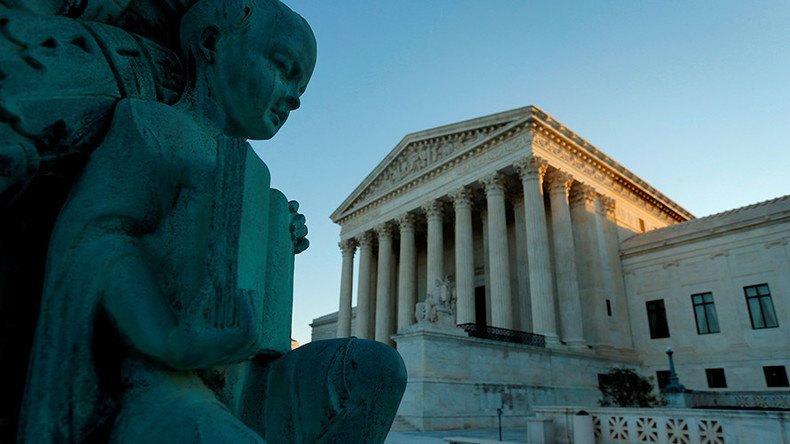‘Disturbing trend’: US Supreme court judge slams decision to side with police in brutality case

One of America’s top judges has slammed a court decision to side with a city police officer in an excessive force lawsuit.
Disputed facts surrounding a 2010 shooting prompted Supreme Court Justice Sonia Sotomayor to describe the decision as a “disturbing trend” within the US legal system.
Justice Sotomayor’s comments relate to an incident that happened on the night of October 29, 2010, when an unarmed man named Ricardo Salazar Limon was shot in the back by Houston police officer Chris Thompson.
Should the word of a police officer accused of brutality be considered 'undisputed fact'? https://t.co/rmmRXOsyKS
— RT America (@RT_America) April 24, 2017
The shot caused catastrophic injuries to Salazar Limon’s spine, paralyzing him below the waist.
The then-25-year-old Salazar Limon had been out driving with three other friends when he was stopped by Thompson for driving approximately 10 miles over the speed limit on the Southwest Freeway.
According to Salazar Limon’s Supreme Court account, the group had drunk “two or three beers” that evening, but were not drinking while driving.
After running Salazar Limon’s license plate number, which came up clean, the police officer is alleged to have tried to handcuff the plaintiff. Salazar Limon said he pulled his hand away and walked toward his vehicle, which is when he was “immediately” shot in the back.
Thompson’s account is largely different. He described how the pair got into a brief struggle before Thompson, believing he was in danger, fired a shot at Limon.
Thompson’s fear is said to have been caused by Salazar Limon reaching towards his waistband for a weapon that, it transpired, was not there. In a second statement Thompson said Salazar Limon began to turn to face him before he fired the shot.
“He started to turn his body but still did not show his hands… he was turning and still not exposing his hands, I discharged my duty weapon,” Thompson said, according to Supreme Court documents.
Salazar Limon attempted to sue the officer but the lawsuit was thrown out by a district court. Last week, his appeal to the Supreme Court was also unsuccessful.
Justice Sotomayor dissent notes "disturbing trend" in SCOTUS's handling of officer qualified immunity. ht @sbagenhttps://t.co/dOiDu3UOnopic.twitter.com/2YtszNA2KL
— Matthew Segal (@segalmr) April 24, 2017
Essentially, the case centered on one man’s word against the other.
Justice Sotomayor believes the case should have gone before a jury and “not a judge reviewing a paper record” of the incident.
Writing in a hard-hitting dissent about the appeal denial, Justice Sotomayor gave her opinion that the case had been weighted in favor of the police officer.
“Our failure to correct the error made by the courts below leaves in place a judgment that accepts the word of one party over the word of another. It also continues a disturbing trend regarding the use of this Court’s resources,” Sotomayor wrote.
Justice Sotomayor holds nothing back. https://t.co/xvmvghRq4Gpic.twitter.com/BlyszeezkW
— Cristian Farías 💫 (@cristianafarias) April 24, 2017
She disputed that Salazar Limon’s failure to deny he “reached for his waistband” meant he offered no controverting evidence to Thompson’s claims.
“We have not hesitated to summarily reverse courts for wrongly denying officers the protection of qualified immunity in cases involving the use of force,” she added.
“But we rarely intervene where courts wrongly afford officers the benefit of qualified immunity in these same cases.”












